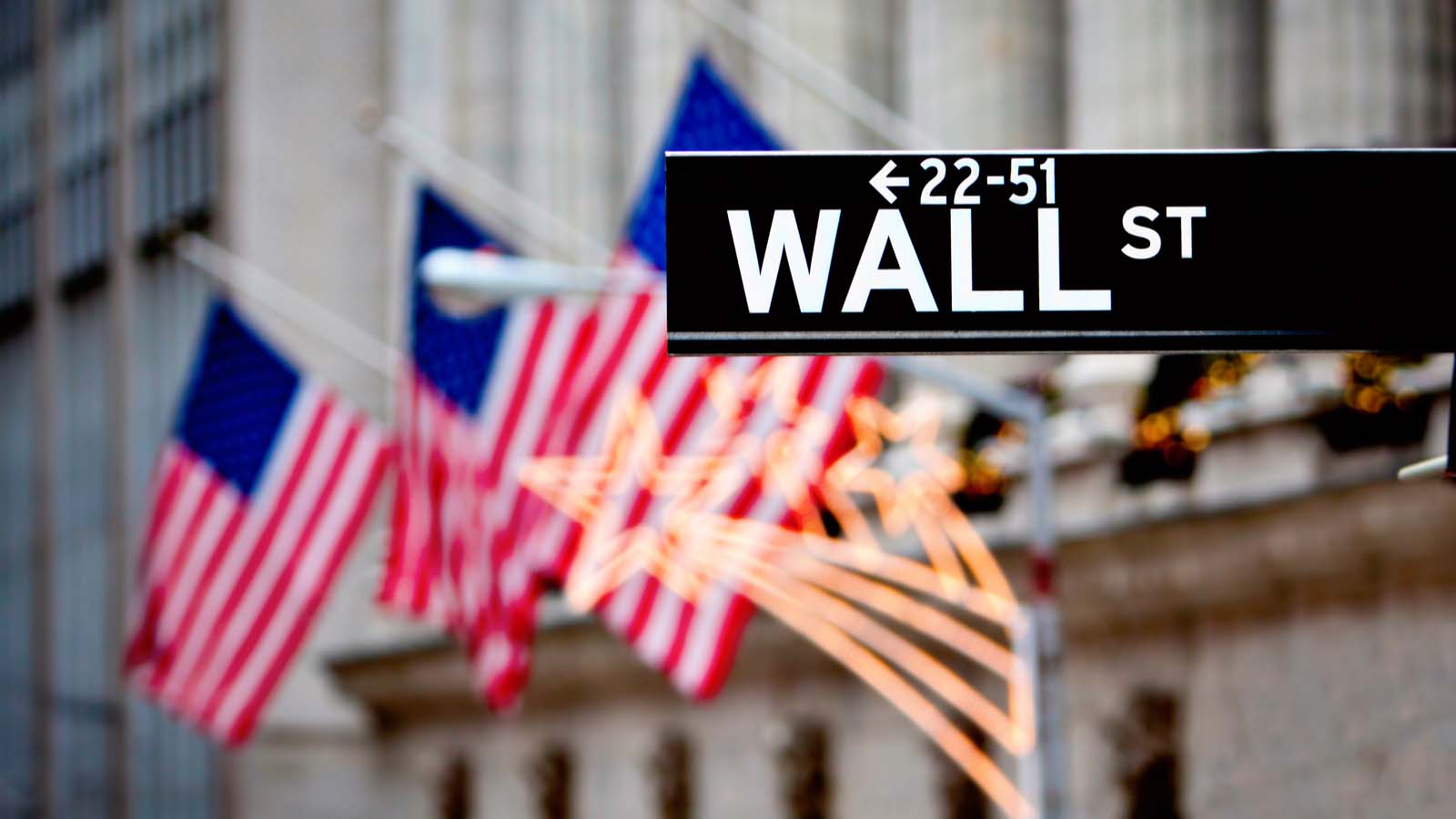Are you looking for stocks to own once the novel coronavirus has moved on?
American business might be down but it’s not out. Warren Buffett recently reiterated his belief in America stating that he will continue to bet on the country as he has for all 89 years he’s been on this planet.
“We do not know exactly what happens when you voluntarily shut down a substantial portion of your society … [O]ur economic train went off the tracks … This time we just pulled the train off the tracks and put it on its siding,” Buffett stated May 2 at the Berkshire Hathaway (NYSE:BRK.A, NYSE:BRK.B) annual meeting.
“We may not know the answers to some very important questions for many years … [but] never bet against America and that in my view is as true today at it was in 1789, and even was true during the Civil War and the depths of the Depression.”
What are the great American born-and-bred businesses that will continue to deliver growth for both the country and its shareholders?
- Microsoft (NASDAQ:MSFT)
- Apple (NASDAQ:AAPL)
- Amazon (NASDAQ:AMZN)
- Berkshire Hathaway
- Johnson & Johnson (NYSE:JNJ)
- JPMorgan Chase (NYSE:JPM)
- Intel (NASDAQ:INTC)
- Home Depot (NYSE:HD)
- PepsiCo (NASDAQ:PEP)
- Disney (NYSE:DIS)
- Adobe (NASDAQ:ADBE)
- Nike (NYSE:NKE)
- McDonald’s (NYSE:MCD)
- Danaher (NYSE:DHR)
- Texas Instruments (NASDAQ:TXN)
- Starbucks (NASDAQ:SBUX)
- 3M (NYSE:MMM)
- United Parcel Service (NYSE:UPS)
- Boeing (NYSE:BA)
- Altria (NYSE:MO)
You can count on these 20 stocks to buy if you’re betting on America.
Stocks to Buy: Microsoft (MSFT)
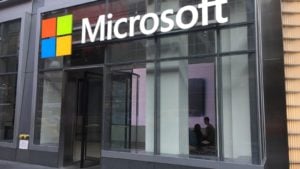
What’s more American than Bill Gates’ former company?
During Covid-19, Gates has been everywhere discussing how the world conquers the coronavirus. His foundation is giving $250 million to the fight. The America I know is charitable and giving to both Americans and those living in the poorest parts of the world.
Bill Gates might have left the Microsoft board in March, but he still engages the company’s management.
“The relationship … [with] Bill is very deep,” Microsoft President Brad Smith told CNBC in April. “He doesn’t come to our board meetings four times a year, doesn’t participate in the board calls, but he’s very much connected to the company.”
Oh, and one more thing, he’s still one of the company’s largest shareholders with just under 103 million shares. Not every company gets to benefit simultaneously from the wisdom of a current CEO (Satya Nadella) and a past one. Microsoft shareholders are lucky to have this luxury.
Apple (AAPL)
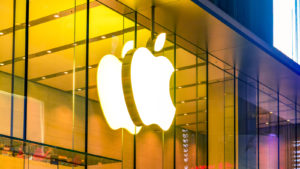
The battle between Apple and Microsoft is about as American as they come. Windows vs. Mac and Bill Gates vs. Steve Jobs basically defined generations of techies. Only with the launch of the iPad, did Microsoft come to the conclusion that it was better to co-exist with Microsoft than continue its long-time rivalry.
In recent years, Tim Cook has taken the company in a different direction, emphasizing its services business alongside the iPhone, iPad and Mac desktops. That’s helped generate healthy profits and free cash flow.
As my InvestorPlace colleague Brad Moon recently stated, Apple has actually done quite well so far in fiscal 2020, despite the hit iPhone sales took in China due to Covid-19.
“That’s pretty impressive considering Apple’s sales of iPhones in China were hammered through February (down a reported 60%), the company experienced iPhone shortages in the U.S. in early March, then shuttered all U.S. Apple Stores — as well as global retail outlets outside of China — starting March 14,” Moon stated May 8.
In the first two quarters of fiscal 2020, the company’s services revenue increased by 16.7% to $26.1 billion, with a gross margin of 65%, significantly higher than the 33% gross margin for its products.
The Apple ecosystem continues to reign supreme.
Amazon (AMZN)
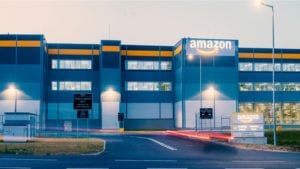
The e-commerce giant might not be the finest employer in the land, failing to keep track of how many of its employees have become sick from the coronavirus, there’s no doubt Jeff Bezos’ story is a true American success.
As CNBC stated in 2017, the world’s richest person’s parents were “a 16-year-old mom and a deadbeat dad.” Hardly the ingredients for success. But Bezos figured out in the 1990’s that the internet was the wave of the future. He would follow his gut and start the online bookseller. It has since morphed into so much more.
On April 30, Amazon reported first-quarter results that included $75.5 billion in revenue and $5.01 in earnings per share. Pretty impressive, right? Well, the company is going to take all the money it makes in the second quarter — estimated to be $4 billion — and put it all toward battling the coronavirus, including tests for its employees.
And now, not only does it have to fight the virus, but Shopify (NYSE:SHOP) is coming for it.
What does that mean in the long-term? Probably nothing. Amazon’s an American success story.
Berkshire Hathaway (BRK.A, BRK.B)

Is there anything more American than Berkshire Hathaway and its 89-year-old CEO? I don’t think so.
People come from around the U.S. and the world to attend the company’s annual meeting. Not this year mind you. Due to the coronavirus, Buffett and Vice Chairman Greg Abel, who’s in charge of its non-insurance operations, held court in front of a camera for almost five hours.
Buffett embodies wisdom, smarts, integrity, a vision for the future and countless other positive traits. One hour reading over some of his annual reports from years gone by and you’ll understand why America believes in him and he believes in America. It’s a winning partnership that sadly is going to be broken up at some point in the future.
In the meantime, despite reporting a loss of almost $50 billion in the first quarter due to $54.5 billion in paper losses from its equity positions, the company’s massive cash hoard — $137 billion at the end of March — remains a major topic of conversation for investors and the media.
Investors want to know when Buffett is going to make another big acquisition? The last one was Precision Castparts, which Berkshire acquired for $32 billion in 2015.
The next one will likely be as American as Berkshire itself.
Johnson & Johnson (JNJ)
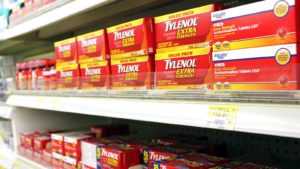
In the first quarter ended March 29, Johnson & Johnson made $6.6 billion in pre-tax income on $20.7 billion in sales. While the company’s consumer health division makes some of the country’s best-known brands including Tylenol, Motrin, Listerine and Aveeno, it only accounts for 12% of the company’s pre-tax income.
The big money comes from its medical devices and pharmaceutical divisions, which accounted for 82% of sales and 88% of pre-tax income during the quarter. While most Americans could name a Johnson & Johnson consumer brand, many likely wouldn’t have a clue about the other two divisions.
As my InvestorPlace colleague, Josh Enomoto, stated in early April, with no vaccine in site for the foreseeable future, if you do get the disease, the best remedy would be to stay home, rest, and possibly use one of the company’s over-the-counter flu medications like Tylenol Cold + Flu Severe.
In business for more than 130 years, J&J employs over 126,000 people around the world and has been making money for investors since its IPO in 1944.
JPMorgan Chase (JPM)
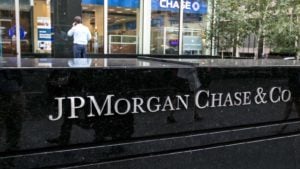
When investors think of the top American bank CEOs, Jamie Dimon of JPMorgan Chase probably most often comes to mind. His stature in the banking sector is legendary.
In 1998, after 16 years of building what became Citigroup (NYSE:C), Dimon was forced out of his job as President. If not for that fateful departure, Dimon’s finest chapter might never have been written.
In March 2000, Dimon was hired to turnaround Chicago-based Bank One. That success led to the 2004 merger with JPMorgan Chase. A year later he was promoted from president to CEO. And the rest, as they say, is history.
Dimon is one of many business executives advising the Trump administration about reopening the economy. Other people on the list include Elon Musk, Jeff Bezos, Tim Cook and Roger Goodell.
The CEO had a bit of a health scare in March when he was admitted to hospital for emergency heart surgery. Dimon, who has been CEO of JPMorgan for longer than any other leader of a major American bank, returned to work after several weeks of recovery, followed by working from home remotely.
In fiscal 2019, Dimon was paid $30 million in performance-based incentives, $25 million of which was in stock. Dimon owns stock and options worth $855 million.
Intel (INTC)

Advanced Micro Devices (NASDAQ:AMD) and Nvidia (NASDAQ:NVDA) might have stolen some of Intel’s thunder in recent years, but when it comes to American innovation, the company’s 51-year history ranks right up there with the best of them.
Founded in July 1968 by Robert Noyce and Gordon Moore, two former Fairchild Semiconductor engineers, the company’s first product was the 3101 64-bit Schottky bipolar random access memory (RAM).
Recently, Intel admitted that it is considering opening a new factory in the U.S. to avoid the country’s reliance on China for the manufacture of chips.
“Intel is in discussions with the United States Department of Defense to explore how to ensure continued US technological leadership and strengthen domestic sources for state-of-the-art microelectronics and related technology,” Intel said in a statement May 11. “As the largest U.S.-owned manufacturer of semiconductors, Intel is well positioned to work with the U.S. government to operate a US-owned commercial foundry and supply a broad range of secure microelectronics.”
While Intel already has fab production sites in four U.S. states, the addition of another facility would strengthen Intel’s position in semiconductor manufacturing, not to mention reducing the constraints of a supply chain focused on China.
Intel remains an iconic American technology company.
Home Depot (HD)
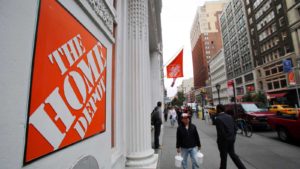
Atlanta Falcons owner Arthur Blank owns the NFL team thanks to the huge success of Home Depot, the company he co-founded with Bernie Marcus in 1978 after getting fired from the jobs.
Blank paid $545 million for the team in 2002. In February 2019, Atlanta hosted Super Bowl LIII (53) in the brand new Mercedes-Benz Stadium. According to Forbes, the Falcons are worth $2.76 billion and generate almost as much revenue in a season as Blank paid for the team.
The largest home improvement retailer in the world, Home Depot generated $11.05 billion in free cash flow in its latest fiscal year ended Feb. 2. That was 4.2% higher than in fiscal 2019.
My InvestorPlace colleague, Josh Enomoto, recently picked Home Depot as one of nine online retail stocks to profit from social distancing.
“Although it’s hardly the sexiest name among retail stocks, Home Depot has really embraced this turmoil. Like prior natural disasters, Home Depot stores have stayed open to support Americans in need. Thus, it wasn’t surprising that state governments deemed these stores essential services,” Josh wrote May 5.
There was a time many years ago when Home Depot let down its guard. Not any more. It’s a great stock to own right now. An American success story for sure.
PepsiCo (PEP)
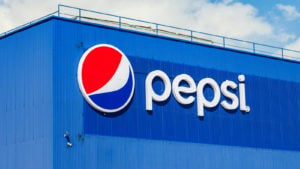
PepsiCo (NASDAQ:PEP) appears to be the better pick during Covid-19 because people staying home are likely to consume snacks and soda — Frito-Lay and Quaker Foods account for 34% of Pepsi’s quarterly sales with beverages accounting for the rest — giving it a big advantage over rival Coca-Cola (NYSE:KO) that doesn’t have a food division.
Further, PepsiCo isn’t nearly as reliant on live events and restaurants like Coke is and that’s wreaking havoc on Coke’s business in the second quarter.
“With a sales mix that skews towards snacks which benefit from at-home consumption, we see a relative favorable risk/reward over the next 12 months and believe PEP is one of the few large-cap names where we see limited downside risk from a multiple perspective,” JPMorgan analyst Andrea Teixeira said at the end of April.
If that’s not enough of an incentive to buy PEP stock, the company is one of the few businesses to be carrying on with its share repurchase program for 2020. It plans to buy back $2 billion of its stock.
Disney (DIS)

One of Disney’s strongest businesses used to be Parks & Resorts. Renamed Parks, Experiences and Products in its March 2018 reorganization to reflect the addition of Disney’s retail stores and interactive media, Covid-19 has prevented the division from really shining.
In the company’s second quarter, the division saw revenues decline 6.7% and operating income by 57.6%, but it still made money. With the coronavirus in full bloom in the U.S. for the entire month of April and likely a good chunk of May, the division’s third-quarter isn’t likely to be much better.
While I’m sure Walt Disney, the man, wouldn’t have approved of Disney furloughing 100,000 employees in April, saving the company an estimated $500 million each month they sit out, Disney’s shareholders are probably happy.
“We believe Parks’ profitability will be impaired for a longer period of time given the lingering effects of the outbreak.” UBS analyst John Hodulik told CNBC. “The economic recession plus the need for social distancing, new health precautions, the lack of travel and crowd aversion are likely to make this business less profitable until there is a widely available vaccine.”
The Disney brand is about as American as they come. However, Covid-19 is putting the brand’s staying power to the test.
Adobe (ADBE)

For anyone who is non-technical like me, Adobe will forever be the creator of the PDF.
However, as my InvestorPlace colleague, Brad Moon, recently stated, the company’s transition to “subscription suites” has made its revenue much less lumpy. With moves into artificial intelligence and analytics, Adobe has become a growth company once more.
In the company’s Q1 2020 conference call, CEO Shantanu Narayen reminded listeners that Photoshop turns 30 years old this year and it’s still going strong. In the fiscal quarter ended Feb. 28, Adobe’s Creative Cloud revenues, which include Photoshop, grew 22% over last year to $1.82 billion, accounting for 59% of the company’s overall revenue.
Adobe’s Creative Annual Recurring Revenue (ARR) at the end of the first quarter was $7.58 billion, up 4.6% on a sequential basis from Q4 2019 and 22% from the same quarter a year earlier.
As mentioned in the beginning, Adobe has transitioned to a subscription-based business model. In the first quarter, these revenues accounted for 91.4% of its $3.09 billion in total revenue. That was up 280 basis points over a year earlier.
The move to the cloud continues to pay dividends for Adobe shareholders.
Nike (NKE)
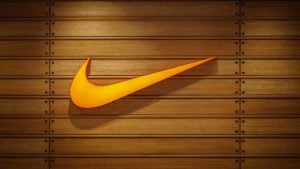
The company that Phil Knight built into an American icon and a global powerhouse, stunned investors last November when it announced that it was pulling its products from Amazon, ending a two-year partnership between the two companies.
“As part of Nike’s focus on elevating consumer experiences through more direct, personal relationships, we have made the decision to complete our current pilot with Amazon Retail,” a Nike spokeswoman told CNBC in November. “We will continue to invest in strong, distinctive partnerships for Nike with other retailers and platforms to seamlessly serve our consumers globally.”
More brands are moving to a direct-to-consumer (DTC) model as a way to better engage its customers. In fiscal 2019, Nike’s DTC model generated $11.8 billion in sales, a 35% increase over fiscal 2018.
There is no question Nike is one of America’s greatest consumer brands. However, if it fails to deliver a corporate workforce that is gender- and culturally-diverse, all of the gains it’s made since its official founding in 1971 will be for nothing.
Sports are for everyone.
McDonald’s (MCD)
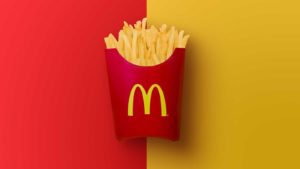
Ah, the Golden Arches. While traveling the world, when you see them outfront the local McDonald’s, you’re suddenly transported home. Today, the company’s international business, whether company-owned or franchised stores, generate 61% of its overall revenues.
McDonald’s remains the ultimate training ground for young, teenage workers interested in getting a hands-on view of how a business is run.
In my home country of Canada, I recently read about a man in his 40’s who started out working at McDonald’s in 1987 in the 11th grade, working all the way up to restaurant manager and then supervisor. His dream was to own a McDonald’s franchise one day.
Life took hold and the dream seemed to fade away until he returned to McDonald’s in 1997, taken under his wing by the franchise owner. In 2018, Nova Scotia-born Darrell Doucet got his first McDonald’s franchise in New Liskeard, Ontario. Two more have followed since then.
Of all the companies on this list, McDonald’s is the one I believe most represents Americana. And you won’t do too bad as an investor, either.
Danaher (DHR)

Danaher CEO Tom Joyce is stepping down as the company’s chief executive on Sept. 1, six years after taking the top job. Since being in the role, Joyce has spearheaded several acquisitions, including its latest, a $21.4 billion purchase of General Electric’s (NYSE:GE) life sciences division, which has been renamed Cytiva.
Taking over the top job at the industrial conglomerate is Rainer Blair, who’s currently Danaher’s executive vice president and led the company’s life sciences business.
“This announced transition comes at a time when Danaher has never been stronger or better positioned to compete given our attractive portfolio of businesses, seasoned leadership team, and Danaher business system culture,” Steven Rales, chairman of the Danaher board, said in a May 6 statement.
Blair takes over at a difficult time for any CEO. In its Q1 2020 earnings release, it stated that it expects second-quarter revenues to be anywhere from flat year over year to -10%. That said, parts of its business — Diagnostics and Life Sciences — are expected to do well, offset by weakness in other areas.
Interestingly, Danaher got its start in the late 1960’s as a real estate investment trust before pivoting to manufacturing in the 1980’s. Brothers Steven and Mitchell Rales were responsible for the change. Steven remains chairman and together, the brothers own more than 11% of Danaher’s stock.
What’s more American than reimagining one’s self?
Texas Instruments (TXN)

Texas Instruments invented the hand-held calculator in 1967 to show off its integrated chip and how it could get into small spaces. Over the years, the company produced numerous calculators. I can remember the TI-35 scientific calculator I used in high school. It was a beauty. Believe it or not, they still make them today.
Like all companies, Texas Instruments is facing its own series of issues related to Covid-19.
It reported Q1 2020 earnings on April 21. They were predictably lower from a year earlier with a 2% decline in analog revenue and an 18% drop for its embedded processing segment. Interestingly, to help investors figure out the future, it used the 2008 financial crisis to provide second-quarter guidance. Both revenues and earnings have large ranges given the uncertainty.
The good news is that it does expect to make at least 64 cents a share in the second quarter on revenue of at least $2.61 billion. Also, of interest, it plans to maintain production in the second quarter when orders slow to ensure it has enough inventory when chip-demand recovers.
In the trailing 12 months ended March 31, Texas Instruments had $5.6 billion in free cash flow, down 6% from a year earlier, but it remains extremely flush despite Covid-19.
Starbucks (SBUX)
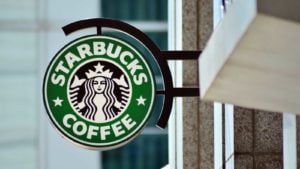
Starbucks is moving to get all of its stores up and running. Here in Canada where I live, they plan to have 65% of their Canadian store fleet open by the end of this week and 85% open by the end of May.
That’s a good thing because it suffered a 10% decline in global same-store sales in the second quarter due to a 31% drop internationally, offset by a much smaller 3% decline in the U.S. As a result of the same-store slowdown, Starbucks’ earnings in the quarter were 32 cents, 47% lower than last year’s second quarter, but only 2 cents lower than the consensus estimate.
Investors can expect a chilly Q3 2020 report for Starbucks as the U.S. results suffer the same fate Asia did in the second quarter. Believe it or not, 255 new Starbucks stores opened in the quarter. While that’s down from 319 in Q2 2019, it still finished the end of March with 32,050 stores open around the world.
Much like McDonald’s, Starbucks is an American’s home away from home when traveling outside the country.
3M (MMM)
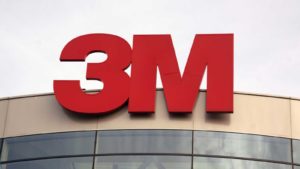
Ever since I was a high school student, I’ve confused 3M with Gillette, which owned Liquid Paper from 1979, when it was sold along with Paper Mate pens to Newell Brands (NASDAQ:NWL) in 2000.
Of course, 3M is the maker of Post-it Notes, which got its start from a couple of research scientists at the company. However, it wasn’t until the company gave the Post-it Notes to a bunch of its office assistants to use, that the product’s popularity became obvious.
What would the world be without the Post-it Note?
Today, 3M is in the press almost daily for its role in fighting the coronavirus. Of course, I’m talking about the company’s N95 masks used by healthcare workers to protect themselves. In late April, it was reported that a Canadian reseller was being taken to court by the company because the firm was charging $17 a mask on its online store, almost six times the list price.
Thanks to the N95 masks and other pockets of strength, 3M reported a 2.7% increase in sales in the first quarter.
“Given the diversity of our businesses, the financial impact of COVID-19 is mixed across 3M,” CEO Mike Roman said on a conference call with analysts in late April. “Some areas of our portfolio are experiencing high demand, while others are facing steep declines.”
Recently, I said that under $145, 3M stock remains an excellent long-term buy. Nothing has changed in the two weeks since to change my opinion.
United Parcel Service (UPS)
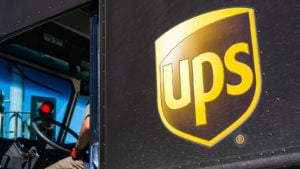
Residential deliveries, whether UPS likes it or not, are the piece of its business that’s not taking a pounding during Covid-19. According to the company, residential deliveries accounted for 70% of its total U.S. volume in the first quarter.
Unfortunately, residential deliveries are far less profitable for United Parcel Service. During Q1 2020, the company said drivers have driven 10% farther, in terms of miles, while making 15% more stops.
If you own UPS or are considering buying UPS, you might want to figure out whether this “new normal” is going to hurt the company over the long haul. I have to believe the company will adjust should it come to realize the new normal will remain so on a permanent basis.
My wife always shows me pictures of UPS drivers posing with dogs from houses they’ve delivered items. That has to be worth something tangible from a PR standpoint.
As for the UPS brown uniform, it has been around since 1925. It’s not going anywhere.
Boeing (BA)
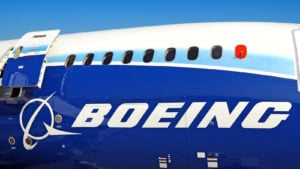
Boeing CEO David Calhoun appeared on NBC’s Today Show on May 11. He admitted that one of America’s biggest airlines will likely be taken down by the coronavirus. That’s because Calhoun believes air travel will only get back to 50% of its historical volume by the end of the year.
On May 8, Calhoun made some other remarks about the aviation industry:
“If I survey all of our customers and I start here in the U.S., and of course we do … most are trying to dial in a return of about 30 [percent] to 50 percent by the end of this year … A lot’s going to depend on how the public responds to the safety of airline cabins, etc.”
Worse still, Calhoun suggested that it would take three years to get back to 2019 levels and another two years to start growing again.
Between the pandemic and its 737 MAX, Boeing shareholders have had a miserable 12 months.
However, one need only look at its $25 billion debt deal to know there are a lot of institutions with a lot of faith in America’s plane builder. Maturities run between 2023 and 2060 with interest rates no higher than 5.930% and as low as 4.508%.
Considering the pickle airlines are facing, institutional investors seem to be saying Boeing will be alive and well forty years from now, no matter which airlines go bankrupt.
Altria (MO)

It might not be politically correct, but the Marlboro Man is about as iconic a symbol of America as anything that exists. The actor who played the original Marlboro Man, Bob Norris, only died this past November at 90. Amazingly, he never smoked, giving up the Altria gig after 14 years because he thought it set a bad example for his kids.
The one thing people won’t do during a pandemic is give up their smoking, which is strange when you consider the coronavirus is a respiratory illness.
Altria remains a dividend stock worth owning if you can overlook the ESG failings. Currently yielding 9.1%, the company’s first-quarter sales increased by 13% while its adjusted earnings rose 18.5% year over year.
In its press release, Altria’s newly-appointed CEO, Billy Gifford, discussed its plans for its dividend: “Our dividend is important to our investors and it remains a top priority for us. Our objective continues to be a dividend payout ratio target of approximately 80% of adjusted diluted EPS. For 2020, we expect to recommend a quarterly dividend rate to our Board that reflects, among other things, our strong cash generation and the strength of our balance sheet.”
If any company can maintain its dividend through Covid-19, the Marlboro Man can.
Will Ashworth has written about investments full-time since 2008. Publications where he’s appeared include InvestorPlace, The Motley Fool Canada, Investopedia, Kiplinger, and several others in both the U.S. and Canada. He particularly enjoys creating model portfolios that stand the test of time. He lives in Halifax, Nova Scotia. At the time of this writing Will Ashworth did not hold a position in any of the aforementioned securities.
